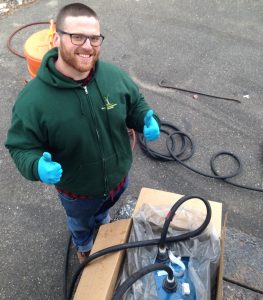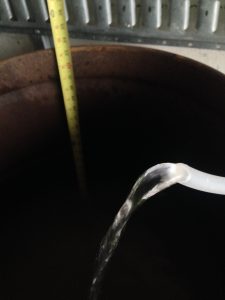Groundwater Sampling
Groundwater sampling and monitoring is a crucial component of the majority of subsurface remediation work. Walden addressed the topic of monitoring well (well) installation in a previous blog; well networks are strategically designed based on the groundwater table and flow gradient in order to monitor and analyze subsurface flow.
Although the end product of collecting a sample can be a mere 120 mL of water, spread out between three sample vials, there are several vital QA/QC steps that should always be employed to make sure that samples collected are representative of the actual site conditions. These include:
-
Purging of the well water prior to collecting sample
The two commonly accepted methods of well purging are: 1) removing three to five volumes of standing water and 2) pumping the well until pH, temperature, and conductance stabilizes. Often times, a combination of the two are employed.
-
Using new, wrapped disposable sampling supplies
Preventing cross-contamination is imperative when performing any sampling task. If an electric or gas-powered pump is used, tubing from new, unwrapped spools must be used for each sampling location. Additionally, new nitrile gloves should be worn during sampling setup, and changed as often as necessary up until and through the sample collection. It is necessary to change out your nitrile gloves immediately before collecting water in sampling vials or jars.
-
Decontaminating reusable sampling supplies
Equipment including gauging probes, pumps, and pass-through water quality monitoring devices shall be thoroughly decontaminated before and after use. A detergent shall be applied to all portions of the equipment that may come in contact with the purge water, and should be rinsed off with distilled water. Any physical contamination such as sediment, scale, or other debris must be removed as part of the decontamination process.
-
Collection of Quality Control (QC) samples during a given event
Depending on the requirements of a specific regulatory agency, or at the discretion of the engineer or scientist, additional samples may be required to ensure laboratory quality control. An example of a QC sample is a “blind duplicate”, which is an additional set of samples collected at a given well. The additional samples should be labeled so that the sampler is aware which well is serving as the blind duplicate, but the lab is not aware of the well identification. This allows for the consultant or a third-party data validator to assess the laboratory’s ability to provide consistent results.
-
Properly preserving and protecting samples
Depending on the type of analyses required and 
Environmental Engineers, Geologists, Scientists, and Consultants
Walden has an experienced team of environmental professionals who have thorough experience with QA/QC and all other areas of groundwater sampling. Please give us a call at (516) 624-7200 to discuss how Walden can help with your next project.

